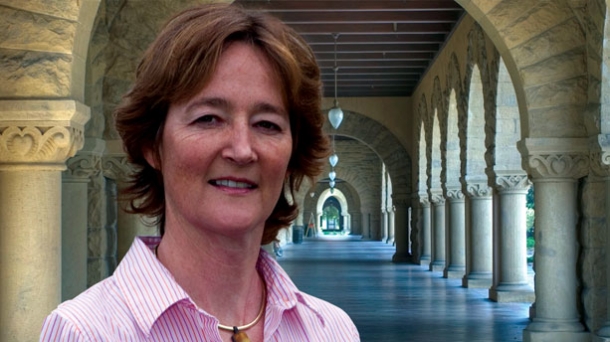You are here

Professor Margaret Brandeau recently returned from Switzerland, where she helped decision makers evaluate options for fighting HIV/AIDS. PHOTO: Courtesy of Margaret Brandeau
Going Viral: Engineer Encourages Unconventional Career
Summer 2011
For the past 20 years, Margaret Brandeau has been using mathematical and computer models to evaluate strategies for controlling HIV. It's a potentially daunting task: Globally, 33 million people are living with the virus, and there are five new infections and three HIV-related deaths every minute. But Brandeau is not an epidemiologist. Or a physician. She is an engineer.
 "She is a perfect example to showcase how engineers, with our technical capabilities, can make a difference in areas most people would not think about—health care, education, politics," says Stanford engineering alumnus Coleman Fung, MS '89. "I really admire her passion, her intellect in what she's doing."
"She is a perfect example to showcase how engineers, with our technical capabilities, can make a difference in areas most people would not think about—health care, education, politics," says Stanford engineering alumnus Coleman Fung, MS '89. "I really admire her passion, her intellect in what she's doing."
To inspire engineering students to follow suit, in 2010 Fung made his first gift to Stanford, committing $2.5 million to endow the Coleman F. Fung Professorship in Engineering. Brandeau is the first to hold the chair.
A professor of management science and engineering, Brandeau recently returned from a sabbatical with the Joint United Nations Programme on HIV/AIDS in Switzerland. Her blend of engineering and public health is yielding critical insights in HIV hot spots.
In March 2011, she and Professor Douglas Owens, from Stanford's School of Medicine, published research showing that in Ukraine, the most effective way to combat the virus' spread is through prevention programs for injection drug users. Using sophisticated computer modeling, they found that drug substitution—providing methadone for opiate users, for example—and antiretroviral therapy for those already infected with HIV will have the most lasting effect. Their work has crucial implications for slowing HIV in Eastern Europe, where the pandemic is spreading faster than anywhere else in the world.
Brandeau's other projects include studying how to prepare for anthrax attacks and how to control hepatitis B in the United States and China.
The ability to cut across academic "silos," on campus or in the field, is a hallmark of management science and engineering (MS&E), says Brandeau. That approach was less common when Fung earned his master's degree in the Department of Industrial Engineering, the precursor to MS&E.
"Traditionally you have engineers being extremely focused and specialized. But in today's world you can’t just focus on one thing," says Fung. He worries that students get pinned to one career path. "Kids nowadays are so programmed. They have a checklist of 'I need to do this, I need to do that.'
"My time at Stanford really gave me the confidence to say, 'Hey, I could do anything. Even start my company.'"
Born in Hong Kong, Fung moved to New York City at age 16. By the time he was 29, he had started and quit college, joined the U.S. Army, earned a bachelor's from Berkeley and a master's from Stanford, worked as a derivatives trader on Wall Street, and launched OpenLink Financial, a leading software company for energy trading and risk management solutions.
With role models like Brandeau, such career paths are becoming more likely. These days, she says, students in MS&E learn how to analyze mathematical and economic systems, but equally important, they learn the human aspects of organizations and technology. Fung hopes that will help them take their engineering skills in new directions.